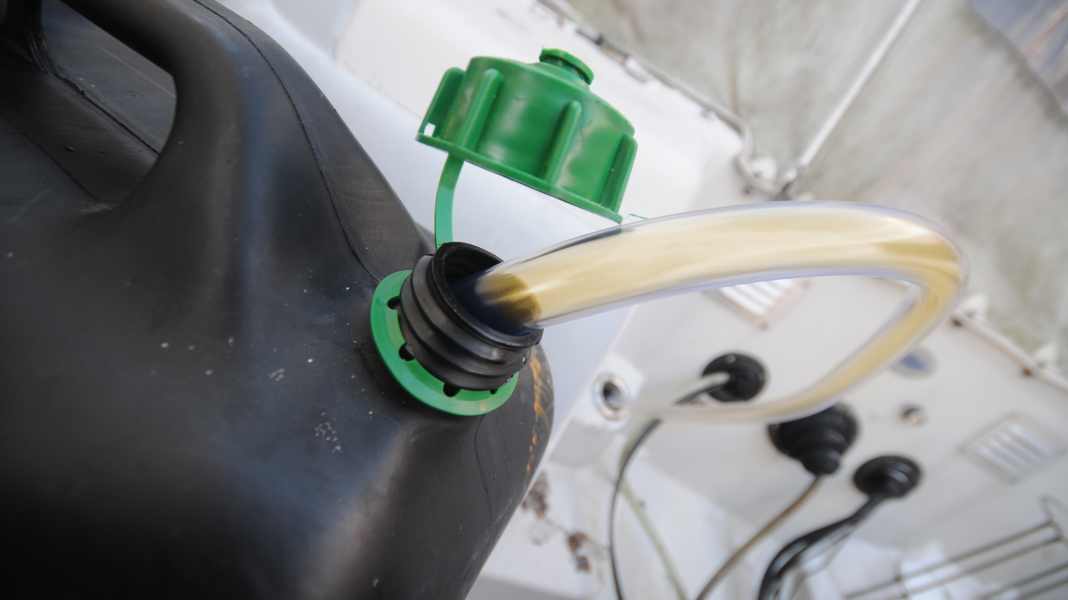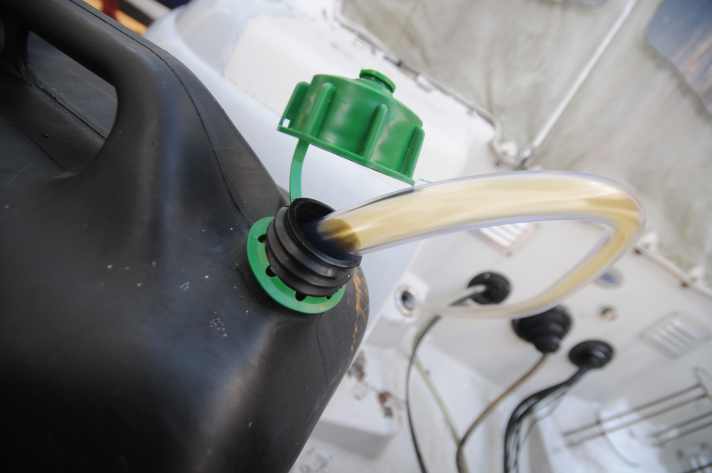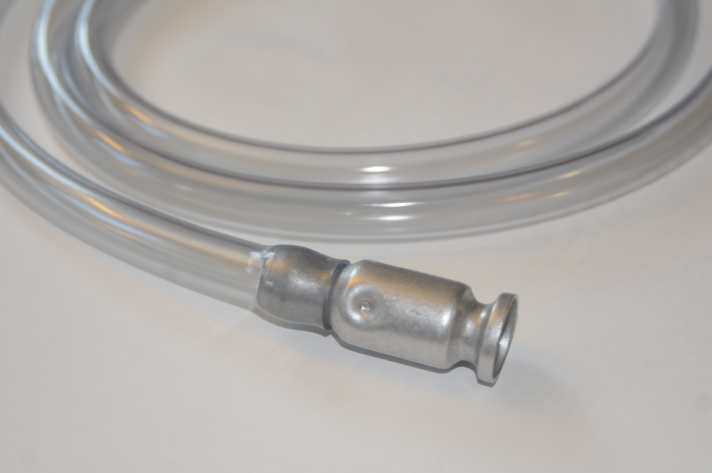

The first question that needs to be clarified is what requirements do I have to fulfil and comply with as a canister tanker? Let's start with the containers: According to the law, these must be approved for fuels. For transport in the car, the containers must be tightly closed and secured against falling over. Our tip: A shopping box that can hold two 10-litre canisters is well suited for this.
Ensure sufficient ventilation by opening a window halfway. A maximum of 240 litres of fuel may be transported in the car. However, the individual containers must not hold more than 60 litres. Before refuelling your boat with a canister in the harbour, you should definitely ask the harbour master. Of course, the local regulations on this subject must also be observed.
How does the fuel get into the boat tank? You can use a funnel and pour the canisters in one after the other. However, you have to keep the container suspended for a few minutes, which is very tiring due to the weight. Refuelling on the water in a swell is usually not possible without spilling something. On many pleasure craft, the filler neck is located on the outboard wall, which makes refuelling even more difficult. Two people are needed for refuelling, especially with tank nozzles mounted in this way: One holds the funnel while the second pours in the fuel.
So a decanting system is needed? We tried out four products and tested them for handling and function. In order to get the fuel from the canister into the tank, gravity helps with three of the transfer systems. This means that the container with the fuel has to be higher than the filler neck. Thanks to the large hoses, this is not a problem.

The classic, the Super Pump consists of a 1.70 m long, transparent tube and an aluminium cylinder about 6 cm long, which has been pressed in such a way that it functions as a non-return valve in conjunction with a glass ball. The handling is simple and proven. The end of the tube with the cylinder is inserted into a canister and the level in the tube rises by gently plucking it up and down. This hand movement is repeated until the fuel is "over the hill" and gravity does the rest.

The Shaker pump is available in various colours and with two hose diameters as well as with an optional strainer. The latter can be useful when refuelling from old tin canisters, as it retains dirt and rust. The hose is longer than that of the Super Pump. The functional diagram is similar to theirs, but the cylinder of the shaker pump is made of plastic.

Westfalia offers a Hand pump with outlet tap on. Thanks to the interaction of two valves and the hand pump, the fuel can be drawn in with just a few hand movements. An outlet tap allows the skipper to control the filling quantity - which is difficult to regulate with the shaker pump, but also with the Super Pump, as the cylinders have to be pulled out of the fuel in order to interrupt the transfer.

Finally, we took a look at the fourth candidate, the Pump & Fill System made. Handling is very good thanks to the filler nozzle. This is also the only system in our test where the canister can stand under the filler neck. Installation is quick and easy: simply press the plug with the two hoses firmly into the canister opening. However, due to the shape of the stopper, this system can only be used with containers with round openings.
Once this hurdle has been overcome, the next step is to build up pressure, which is done with the left or right foot thanks to the foot pump supplied. Pumping pressurises the fuel canister, forcing the fuel through the hose to the nozzle. The fuel flow is controlled via a valve that is operated on the handle. Regardless of which system you choose, caution and prudent behaviour are of course always required when handling fuel.
Just as important as the answer to "How does the fuel get into the tank?" is "How can I make sure that I don't overfill the tank or collect the excess?"

We have scrutinised two other products in this regard. Firstly: the Tank overflow whistle. This is installed in the hose for the tank ventilation. The function is simple: the air flowing out of the vent during refuelling is directed through the whistle, producing a sound. When this sound stops, the tank is filled up to the whistle. Installation is correspondingly complex, as the vent hose must be cut at a suitable point.

The second product is easier to attach, namely with two suction cups, the Tank overflow protection. One problem with boats on which the vent has been installed below or at the same level as the tank nozzle is that the fuel flows out of the vent valve when the tank is overfilled. The tank overflow protection container has a hole which is placed over the vent valve. Mounted in this way, the overflowing fuel is collected and can be poured back into the tank.

